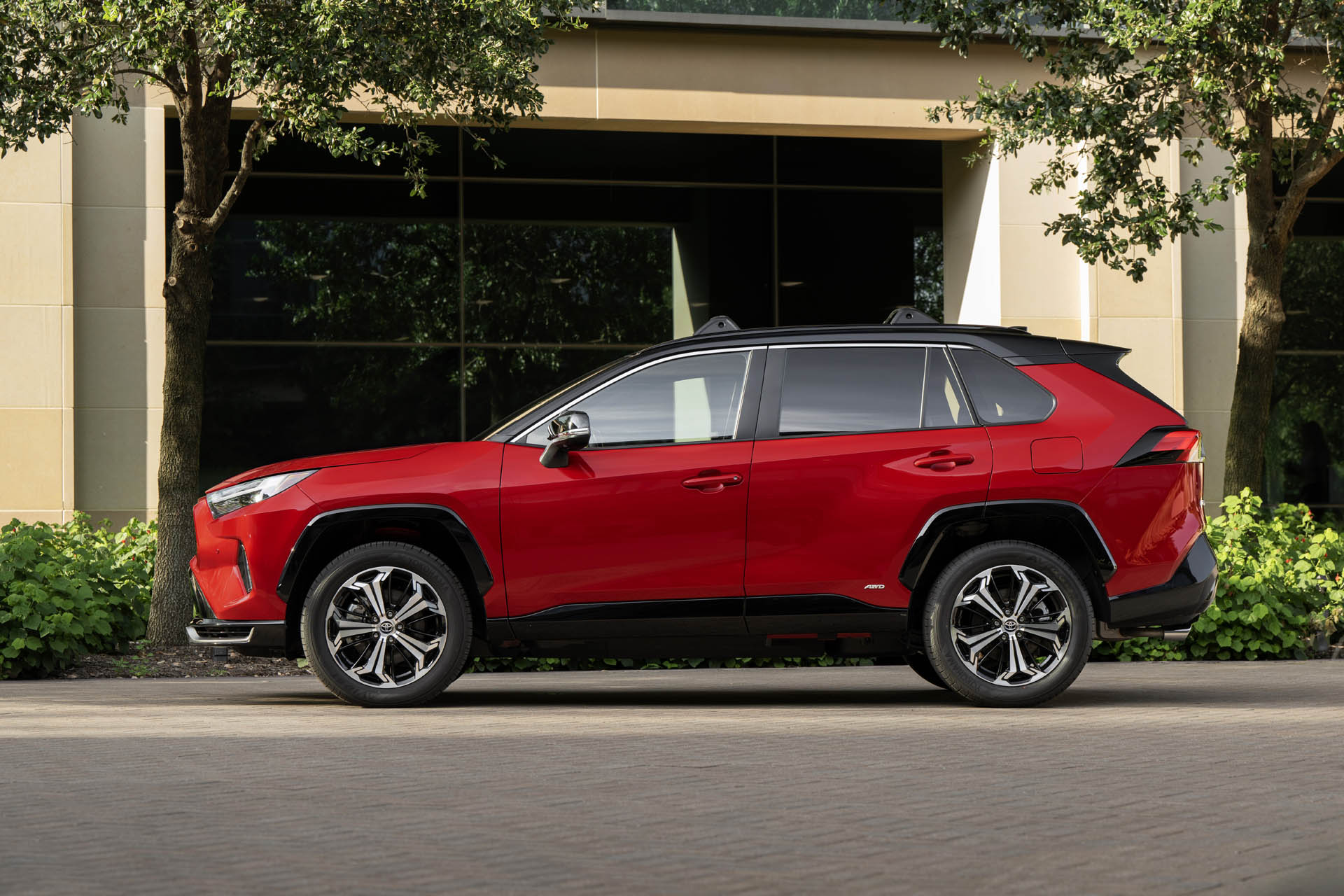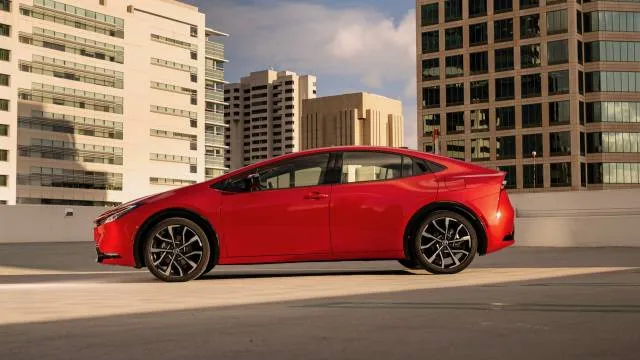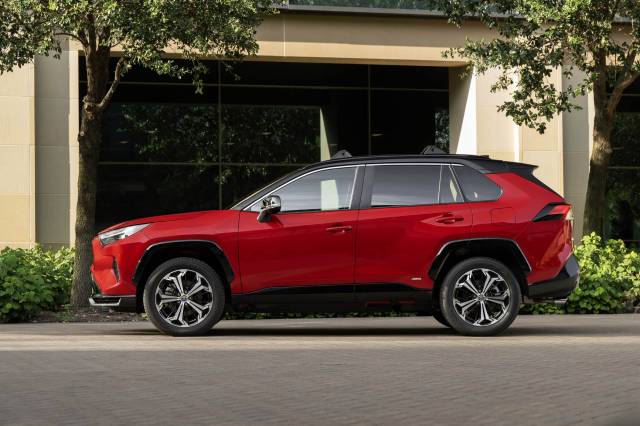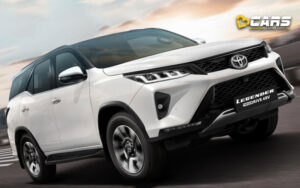
- Plug-in versions of the 2025 Toyota Prius and 2025 Toyota RAV4 no longer carry the Prime name
- Toyota’s change in naming also suggests it will revisit the bZ nomenclature for electric vehicles
- The change comes as more consumers buy hybrids, plug-in hybrids, and fully electric vehicles
The plug-in hybrid versions of the 2025 Toyota Prius and the 2025 Toyota RAV4 no longer carry the Prime designation, Toyota announced Thursday.
The change in naming convention is to help customers identify the different powertrain choices in each model as well as better align with industry conventions.

2025 Toyota Prius Plug-In Hybrid
The 2025 Toyota Prius comes standard as a traditional through-the-road hybrid that doesn’t require a plug, and it also has a plug-in hybrid (PHEV) option with a much larger 13.6-kwh battery that provides up to 44 miles of all-electric driving range.
The 2025 Toyota RAV4 comes with internal combustion engines (ICE), as a Hybrid, or as a PHEV. The 2025 RAV4 PHEV uses a 18.5-kwh battery pack feeding two electric motors that are complemented by the same 2.5-liter inline-4 used in the RAV4 Hybrid. The PHEV has a 42-mile range, or 38 mpg combined when additional plug-in energy has been depleted.

2025 Toyota RAV4 Plug-In Hybrid
The PHEVs mean that most around-town commuting and errands can be completed without needing to tap the gas engine. In addition to saving money by avoiding the pumps around town, when you hit the road you don’t need to waste time charging it because the gas engine runs efficiently enough. That’s true for PHEVs of most kinds, not just Toyota’s. The downside is a higher sticker price—the RAV4 PHEV SE costs about $9,000 more than the RAV4 Hybrid SE—and more mechanical complexity.
Presumably, Toyota aims to clean up its conventions regarding electrified powertrains. With four distinct energy sources in its vast powertrain lineup, including internal combustion, Toyota likely saw the need to distinguish the sources as more PHEVs and EVs come to market.
Toyota currently sells hybrid variants of all its major vehicles, excepting its sports cars. It currently sells 16 hybrids, two plug-in hybrids, one fuel-cell car, and one EV. The undisputed hybrid leader in the U.S. also makes and sells the Toyota Mirai hydrogen fuel-cell sedan and the bZ4X battery electric crossover. The Toyota bZ4X crossover uses either a 71.4-kwh or 72.8-kwh battery pack to supply up to 252 miles of range.
Toyota had intended to use the bZ designation, as in “Beyond Zero,” (also as in drawing the ire of every copy editor everywhere), for its planned growth of its electric vehicle line, but that too may go the route of Prime. A bZ5X electric crossover was planned, as is a Highlander EV that will succeed the gas and hybrid versions of the current Toyota Highlander three-row crossover SUV. The bZ5X and Highlander EV likely will be separate vehicles, and it would seem Toyota wouldn’t want to step away from such a recognized model name.
Toyota’s dropping of the Prime badge for more widely understood nomenclature follows industry trends in plug-in vehicles. While electric vehicle sales have grown marginally so far this year, accounting for 8% of all new car sales in the first half of 2024, hybrid and plug-in hybrid sales have had steady growth domestically, with hybrids representing 9.6% and plug-in hybrids more than 2.0%, respectively, according to the U.S. Energy Information Administration.
Put another way, one in five new cars sold has an electrified powertrain. Now that Prime is dropped for PHEV, it might be easier to track such things.



